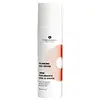What's inside
What's inside
 Key Ingredients
Key Ingredients

 Benefits
Benefits

 Concerns
Concerns

 Ingredients Side-by-side
Ingredients Side-by-side

Water
Skin ConditioningGlyceryl Stearate
EmollientVitis Vinifera Seed Oil
EmollientCassia Angustifolia Seed Polysaccharide
Skin ConditioningNiacinamide
SmoothingButyrospermum Parkii Butter
Skin ConditioningCaprylic/Capric Triglyceride
MaskingTocopheryl Acetate
AntioxidantGlycerin
HumectantCamellia Seed Oil
Persea Gratissima Oil
Skin ConditioningBorago Officinalis Seed Oil
EmollientOenothera Biennis Oil
EmollientCetyl Alcohol
EmollientLinum Usitatissimum Seed Flour
AbrasiveSimmondsia Chinensis Seed Oil
EmollientLactoperoxidase
StabilisingGlucose Oxidase
StabilisingAlgae
Skin ConditioningPanax Ginseng Root Extract
EmollientChamomilla Recutita Leaf Extract
MaskingAloe Barbadensis Leaf Extract
EmollientEchinacea Angustifolia Leaf Extract
MoisturisingCucumis Sativus Extract
Skin ConditioningRosmarinus Officinalis Extract
AntimicrobialCalophyllum Tacamahaca Seed Oil
EmollientBisabolol
MaskingMelaleuca Alternifolia Leaf Oil
AntioxidantLecithin
EmollientXanthan Gum
EmulsifyingCitric Acid
BufferingWater, Glyceryl Stearate, Vitis Vinifera Seed Oil, Cassia Angustifolia Seed Polysaccharide, Niacinamide, Butyrospermum Parkii Butter, Caprylic/Capric Triglyceride, Tocopheryl Acetate, Glycerin, Camellia Seed Oil, Persea Gratissima Oil, Borago Officinalis Seed Oil, Oenothera Biennis Oil, Cetyl Alcohol, Linum Usitatissimum Seed Flour, Simmondsia Chinensis Seed Oil, Lactoperoxidase, Glucose Oxidase, Algae, Panax Ginseng Root Extract, Chamomilla Recutita Leaf Extract, Aloe Barbadensis Leaf Extract, Echinacea Angustifolia Leaf Extract, Cucumis Sativus Extract, Rosmarinus Officinalis Extract, Calophyllum Tacamahaca Seed Oil, Bisabolol, Melaleuca Alternifolia Leaf Oil, Lecithin, Xanthan Gum, Citric Acid
Water
Skin ConditioningButylene Glycol
HumectantIsononyl Isononanoate
EmollientGlycerin
HumectantSqualane
EmollientCeramide NP
Skin ConditioningHydrolyzed Collagen
EmollientSodium Hyaluronate
Humectant1,2-Hexanediol
Skin ConditioningHydroxyacetophenone
AntioxidantNiacinamide
SmoothingBetaine
HumectantSorbitan Isostearate
EmulsifyingPhloretin
AntioxidantPanthenol
Skin ConditioningTrehalose
HumectantCetearyl Alcohol
EmollientAcrylates/Ammonium Methacrylate Copolymer
Cetearyl Glucoside
EmulsifyingAngelica Keiskei Extract
AntioxidantPentylene Glycol
Skin ConditioningAloe Barbadensis Leaf Extract
EmollientEpigallocatechin Gallate
AntioxidantSophora Angustifolia Root Extract
Skin ConditioningLycium Barbarum Fruit Extract
AstringentEchinacea Purpurea Extract
MoisturisingHydrolyzed Hibiscus Esculentus Extract
Skin ConditioningPaeonia Albiflora Root Extract
Skin ConditioningBoswellia Serrata Extract
Skin ConditioningXanthan Gum
EmulsifyingCentella Asiatica Extract
CleansingWater, Butylene Glycol, Isononyl Isononanoate, Glycerin, Squalane, Ceramide NP, Hydrolyzed Collagen, Sodium Hyaluronate, 1,2-Hexanediol, Hydroxyacetophenone, Niacinamide, Betaine, Sorbitan Isostearate, Phloretin, Panthenol, Trehalose, Cetearyl Alcohol, Acrylates/Ammonium Methacrylate Copolymer, Cetearyl Glucoside, Angelica Keiskei Extract, Pentylene Glycol, Aloe Barbadensis Leaf Extract, Epigallocatechin Gallate, Sophora Angustifolia Root Extract, Lycium Barbarum Fruit Extract, Echinacea Purpurea Extract, Hydrolyzed Hibiscus Esculentus Extract, Paeonia Albiflora Root Extract, Boswellia Serrata Extract, Xanthan Gum, Centella Asiatica Extract
 Reviews
Reviews

Ingredients Explained
These ingredients are found in both products.
Ingredients higher up in an ingredient list are typically present in a larger amount.
Aloe Barbadensis Leaf Extract is an extract of the leaves of the aloe, Aloe barbadensis, Liliaceae.
Aloe is one of the most well-known natural soothing ingredients, and for good reason. It’s full of water and has a cooling, calming effect on the skin, especially when it’s sunburned, itchy, or irritated. Aloe also helps your skin stay hydrated and smooth by mimicking what healthy skin naturally produces. On top of that, it contains vitamins and nutrients that support skin recovery.
It doesn’t protect you from the sun, but it can help your skin bounce back after too much time in it.
Let’s get into the details:
Aloe contains antioxidant Vitamins A, C, and E, which help fight off free radicals (unstable molecules from things like pollution that can damage your skin).
It’s also rich in polysaccharides, which are natural sugars that help hydrate the skin by acting like the skin’s own moisturizing agents. These, along with other sugars like monosaccharides, help form a protective barrier that locks in moisture.
Aloe works as both a humectant and an emollient. That means it draws water into the skin (humectant) and helps trap it there (emollient), making it an effective natural moisturizer.
You’ll also find a mix of other skin-supporting ingredients in aloe, including folic acid, choline, calcium, amino acids, fatty acids, and even Vitamin B12.
Out of the 420+ species of aloe, Aloe barbadensis is the most widely used in skincare products thanks to its gentle yet effective properties.
There are over 420 species of aloe but Aloe Barbadensis is the most commonly used for topical products.
Learn more about Aloe Barbadensis Leaf ExtractGlycerin is already naturally found in your skin. It helps moisturize and protect your skin.
A study from 2016 found glycerin to be more effective as a humectant than AHAs and hyaluronic acid.
As a humectant, it helps the skin stay hydrated by pulling moisture to your skin. The low molecular weight of glycerin allows it to pull moisture into the deeper layers of your skin.
Hydrated skin improves your skin barrier; Your skin barrier helps protect against irritants and bacteria.
Glycerin has also been found to have antimicrobial and antiviral properties. Due to these properties, glycerin is often used in wound and burn treatments.
In cosmetics, glycerin is usually derived from plants such as soybean or palm. However, it can also be sourced from animals, such as tallow or animal fat.
This ingredient is organic, colorless, odorless, and non-toxic.
Glycerin is the name for this ingredient in American English. British English uses Glycerol/Glycerine.
Learn more about GlycerinNiacinamide is a multitasking form of vitamin B3 that strengthens the skin barrier, reduces pores and dark spots, regulates oil, and improves signs of aging.
And the best part? It's gentle and well-tolerated by most skin types, including sensitive and reactive skin.
You might have heard of "niacin flush", or the reddening of skin that causes itchiness. Niacinamide has not been found to cause this.
In very rare cases, some individuals may not be able to tolerate niacinamide at all or experience an allergic reaction to it.
If you are experiencing flaking, irritation, and dryness with this ingredient, be sure to double check all your products as this ingredient can be found in all categories of skincare.
When incorporating niacinamide into your routine, look out for concentration amounts. Typically, 5% niacinamide provides benefits such as fading dark spots. However, if you have sensitive skin, it is better to begin with a smaller concentration.
When you apply niacinamide to your skin, your body converts it into nicotinamide adenine dinucleotide (NAD). NAD is an essential coenzyme that is already found in your cells as "fuel" and powers countless biological processes.
In your skin, NAD helps repair cell damage, produce new healthy cells, support collagen production, strengthen the skin barrier, and fight environmental stressors (like UV and pollution).
Our natural NAD levels start to decline with age, leading to slower skin repair, visible aging, and a weaker skin barrier. By providing your skin niacinamide, you're recharging your skin's NAD levels. This leads to stronger, healthier, and younger looking skin.
Another name for vitamin B3 is nicotinamide. This vitamin is water-soluble and our bodies don't store it. We obtain Vitamin B3 from either food or skincare. Meat, fish, wheat, yeast, and leafy greens contain vitamin B3.
The type of niacinamide used in skincare is synthetically created.
Learn more about NiacinamideWater. It's the most common cosmetic ingredient of all. You'll usually see it at the top of ingredient lists, meaning that it makes up the largest part of the product.
So why is it so popular? Water most often acts as a solvent - this means that it helps dissolve other ingredients into the formulation.
You'll also recognize water as that liquid we all need to stay alive. If you see this, drink a glass of water. Stay hydrated!
Learn more about WaterXanthan gum is used as a stabilizer and thickener within cosmetic products. It helps give products a sticky, thick feeling - preventing them from being too runny.
On the technical side of things, xanthan gum is a polysaccharide - a combination consisting of multiple sugar molecules bonded together.
Xanthan gum is a pretty common and great ingredient. It is a natural, non-toxic, non-irritating ingredient that is also commonly used in food products.
Learn more about Xanthan Gum